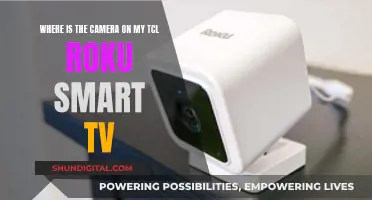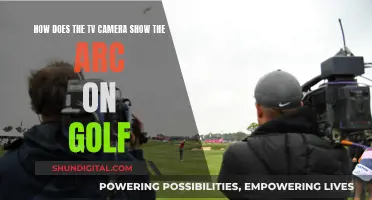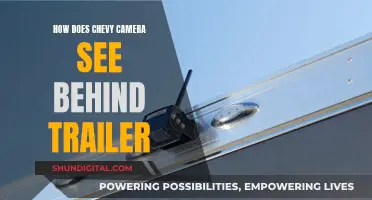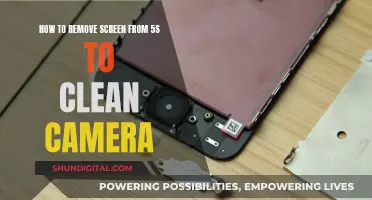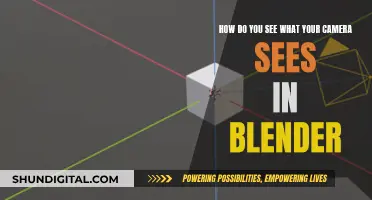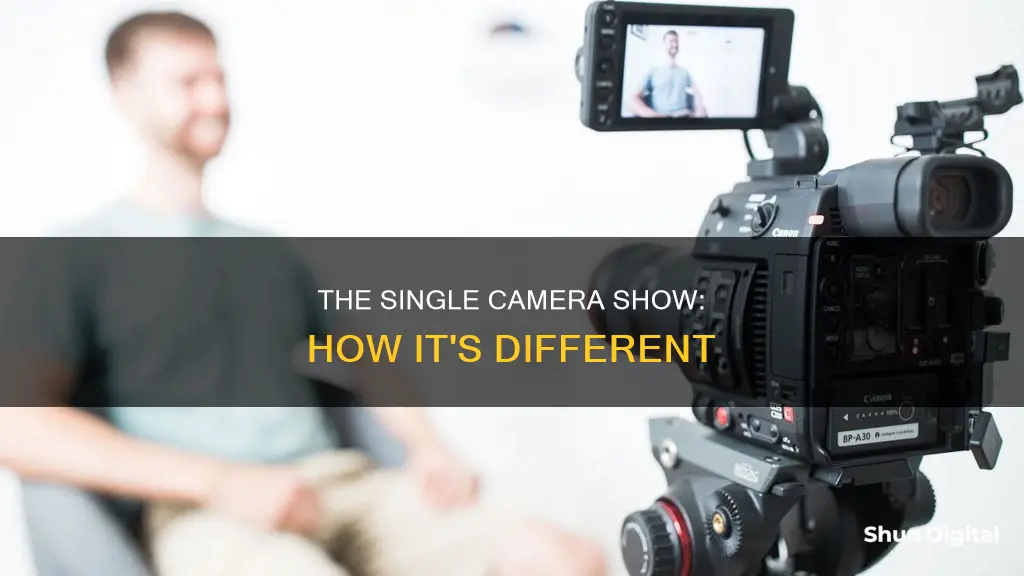
Single-camera TV shows are a method of production in which all shots and camera angles are taken using the same camera. This setup allows for more exploration and flexibility in storytelling, giving writers the ability to easily switch between writing a sitcom or an hour-long drama. Single-camera shows tend to have smaller production crews, allowing them to film more exterior shots in multiple locations. This gives writers the opportunity to explore their characters in new environments and gives the director more control over each shot. Single-camera shows include The Office, New Girl, Modern Family, and Barry.
| Characteristics | Values |
|---|---|
| Number of cameras | One main camera and sometimes a B-camera for additional footage of the same scene. Additional cameras may be used for different locations or to capture medium and close-up shots during the same take. |
| Filming technique | All shots and angles are taken using the same camera, or multiple cameras pointed in one direction, which are moved and reset to get a new angle. |
| Production time | More generous production time, allowing for more takes of the same scene. |
| Script format | Single-spaced without act breaks. |
| Production crew | Smaller and more nimble production crews. |
| Locations | More exterior shots in more locations. |
| Sets | No fixed sets, but rather dedicated and built sets that vary from location to location. |
| Genre | More exploration of genres beyond situation comedies, such as drama and action. |
| Audience | No live audience and no added laugh track. |
| Visual style | More cinematic and intimate, allowing audiences to get to know the characters more deeply. |
What You'll Learn

Single-camera shows are more like films
Single-camera TV shows have a lot of similarities to films. Firstly, both single-camera shows and films have a dedicated crew and built sets to film in, which can vary in location. This allows writers and directors to explore beyond the confines of a soundstage setup, enabling them to film in multiple locations and create a wider range of genres. Single-camera shows can be more cinematic in their visual style, allowing them to explore a wider range of themes and characters.
Single-camera shows also allow for more stunts, car chases, and action scenes, which would be difficult to execute on a soundstage. This gives them a more intimate and immersive feel, allowing audiences to get to know the characters more deeply. Single-camera shows can be more nuanced and realistic, blending genres and emotions to create a more complex viewing experience.
The single-camera setup also gives the director more control over each shot. It is more time-consuming but allows for multiple takes of the same scene, giving actors and writers the opportunity to explore their characters in more depth. This enhances the entertainment value of the show.
Single-camera shows are written in a similar format to film scripts, although the structure differs. This format gives writers the flexibility to write for both a sitcom and an hour-long drama, attracting writers who can perform on both platforms.
Gabb Watch Camera Speculation: What Parents Need to Know
You may want to see also

Single-camera shows have more time for multiple takes
Single-camera TV shows have more time for multiple takes of the same scene. This is because they have a more flexible production schedule, allowing them to search for the perfect blend of genres to meet the story's needs. The extra time on set also benefits the actors and writers, giving them the opportunity to explore their characters in more depth, ultimately enhancing the entertainment value of the show.
Single-camera shows are often more time-consuming to produce than multi-camera shows, which tend to be filmed in a single day, or even just a few hours. This is because multi-camera shows are usually filmed in front of a live studio audience, with multiple cameras capturing the necessary angles simultaneously. This means that multiple takes can be captured all at the same time and from different points of perspective, making for many more options during the editing process.
In contrast, single-camera shows use the same camera, or multiple cameras pointed in one direction, to capture different shots and camera angles. This involves moving and resetting the camera to get a new angle, which takes more time. However, this approach gives the director more control over each shot and allows for more exterior shots in a variety of locations. Single-camera shows can also be more intimate and immersive, allowing audiences to get to know the characters more deeply.
The single-camera setup is the standard mode of production for cinema, and has become increasingly popular for television shows in recent years, with shows like Modern Family, Silicon Valley, and The Last Man on Earth employing this format. Single-camera shows tend to have smaller, more nimble production crews, and their scripts are typically single-spaced without act breaks, whereas multi-camera show scripts are double-spaced.
Smart TV Features: Microphone and Camera Privacy Concerns
You may want to see also

Single-camera shows can have a more intimate viewing experience
Single-camera shows can offer a more intimate viewing experience for audiences. This is due to a variety of factors, including the production style, the ability to explore a wider range of themes and characters, and the opportunity for audiences to delve into the inner workings of the show.
Firstly, the single-camera setup allows for more flexibility in terms of production style. Single-camera shows tend to have smaller, more agile production crews, enabling them to film in multiple locations and capture a variety of exterior shots. This mobility allows writers to explore different environments and develop characters by showing their reactions to new places. While multi-camera shows typically rely on a few fixed sets, such as an apartment or a cafe, single-camera shows can offer a more dynamic and varied visual experience.
The single-camera approach also allows for more nuanced storytelling. With the ability to capture a wider range of shots, angles, and locations, single-camera shows can explore complex emotions, themes, and genres. They are not limited to being strictly situation comedies and can incorporate elements of drama, action, and stunts. This versatility provides a more immersive experience for viewers, allowing them to connect with the characters on a deeper level.
Additionally, the absence of a live audience in single-camera shows creates a different dynamic between the audience and the actors. Without the immediate feedback and energy of a live audience, single-camera shows rely on the audience's engagement with the characters and their personal journeys. This can lead to a more intimate connection, especially in the age of streaming, where viewers often binge-watch shows and develop strong attachments to the characters.
The production schedule of single-camera shows also contributes to the intimate viewing experience. With more time for filming and multiple takes, single-camera shows allow actors and writers to delve deeper into character development, enhancing the overall entertainment value. This exploration of character nuances and complex emotions creates a more engaging and immersive narrative for viewers.
Furthermore, the single-camera format enables writers to easily transition between different formats, such as a sitcom or an hour-long drama. This flexibility allows for a seamless blend of genres and emotions, resulting in a more dynamic and captivating viewing experience.
In conclusion, single-camera shows offer a more intimate viewing experience by providing a dynamic visual style, nuanced storytelling, and a deeper connection with the characters. The production techniques and scheduling allow for a more immersive and engaging narrative, creating a unique and captivating television experience for audiences.
Accessing ADT Cameras: Server Viewing Guide
You may want to see also

Single-camera shows can explore a wider range of genres
Single-camera TV shows have a more flexible production schedule, allowing for multiple takes of the same scene and more time for actors and writers to explore their characters. This means that single-camera shows can explore a wider range of genres, themes, and characters. They are not limited to being situation comedies and can delve into more complex and nuanced emotions and storylines.
Single-camera shows can have a more cinematic visual style, with more exterior shots and varied locations. They can also include more action scenes, stunts, and car chases, as they are not confined to a soundstage or limited set-up. Single-camera shows can have smaller, more nimble production crews, which makes it easier to film in multiple locations. This flexibility allows writers to set characters in new environments and explore their reactions to different situations.
Single-camera shows also tend to have a more intimate and immersive audience experience. Without a live audience, these shows can create a deeper connection with viewers, who can explore the characters' emotions and reactions more closely. This immersive experience is particularly appealing to viewers who have been spending more time at home due to the COVID-19 pandemic.
The single-camera format also allows for more flexibility in the scriptwriting process. Single-camera sitcoms are written in a standard format similar to movie scripts, giving writers more freedom to explore different genres and storytelling techniques. In contrast, multi-camera sitcoms have a more technical and streamlined format to accommodate their faster production schedule.
Smart TV Camera: A Hacker's Window to Your Home
You may want to see also

Single-camera shows are more expensive to produce
Single-camera TV shows are often more expensive to produce than multi-camera shows. This is due to a number of factors, including the time it takes to film and the number of locations used.
Single-camera shows tend to have a more generous production schedule, allowing for multiple takes of the same scene. This means that fewer episodes can be filmed per day compared to multi-camera shows, which can be filmed within a single day. The additional time required for single-camera shows can increase costs for producers.
Single-camera shows also tend to have smaller production crews, which allows them to film more exterior shots and in a greater variety of locations. This increased mobility comes at a cost, as it requires transportation of equipment and personnel, as well as potentially needing to secure filming permissions for multiple locations.
The single-camera setup also gives the director more control over each shot, which can be advantageous for certain types of shows. However, this level of control comes at the expense of increased filming time and the need for more complex lighting setups, as each shot needs to be lit individually.
The multi-camera setup, on the other hand, is generally faster and cheaper. Multiple cameras capture different angles of a scene simultaneously, reducing the time and lighting equipment required. Multi-camera shows also tend to have a few key sets, such as an apartment or office, that are used for the majority of the filming, reducing the need for transportation and location scouting.
In summary, the single-camera setup provides more flexibility and control for the director but comes at the cost of increased filming time, equipment, and locations, all of which contribute to higher production costs.
A Simple Guide to Watching Videos on DBPOWER Cameras
You may want to see also
Frequently asked questions
A single-camera TV show is a show that is shot with one camera. This doesn't mean only one camera is used to film the show overall, but the look of the show will always remain from one perspective.
Multi-camera shows are filmed with three or four cameras capturing different angles of the same moment. Single-camera shows have more time to film and can film in more locations, whereas multi-camera shows tend to have a few key sets that are used for the majority of the filming.
Examples of single-camera comedies include The Office, New Girl, Superstore, and Modern Family. Single-camera dramas include Barry, Transparent, and Casual.
Single-camera shows have more time for filming and can explore a wider range of genres, locations, characters, and themes. They can also be more intimate and immersive for the audience.



